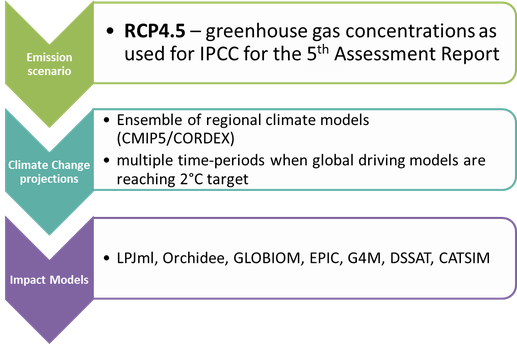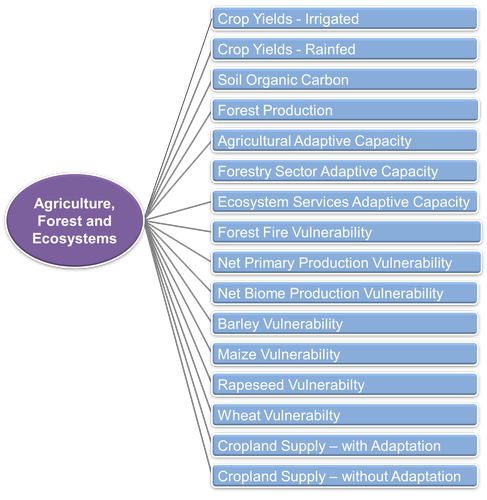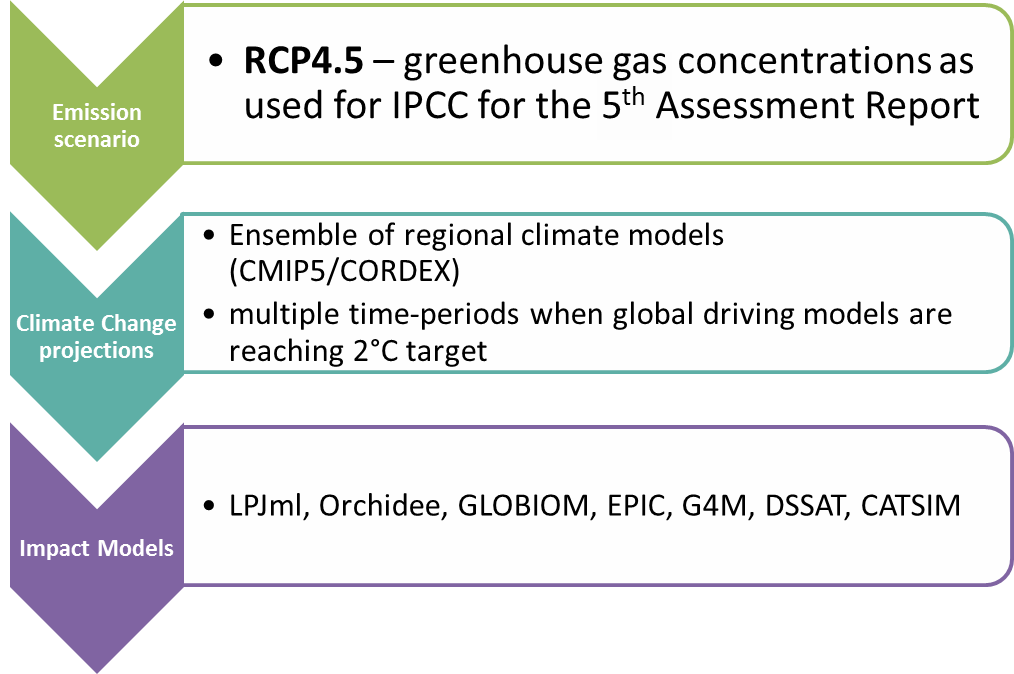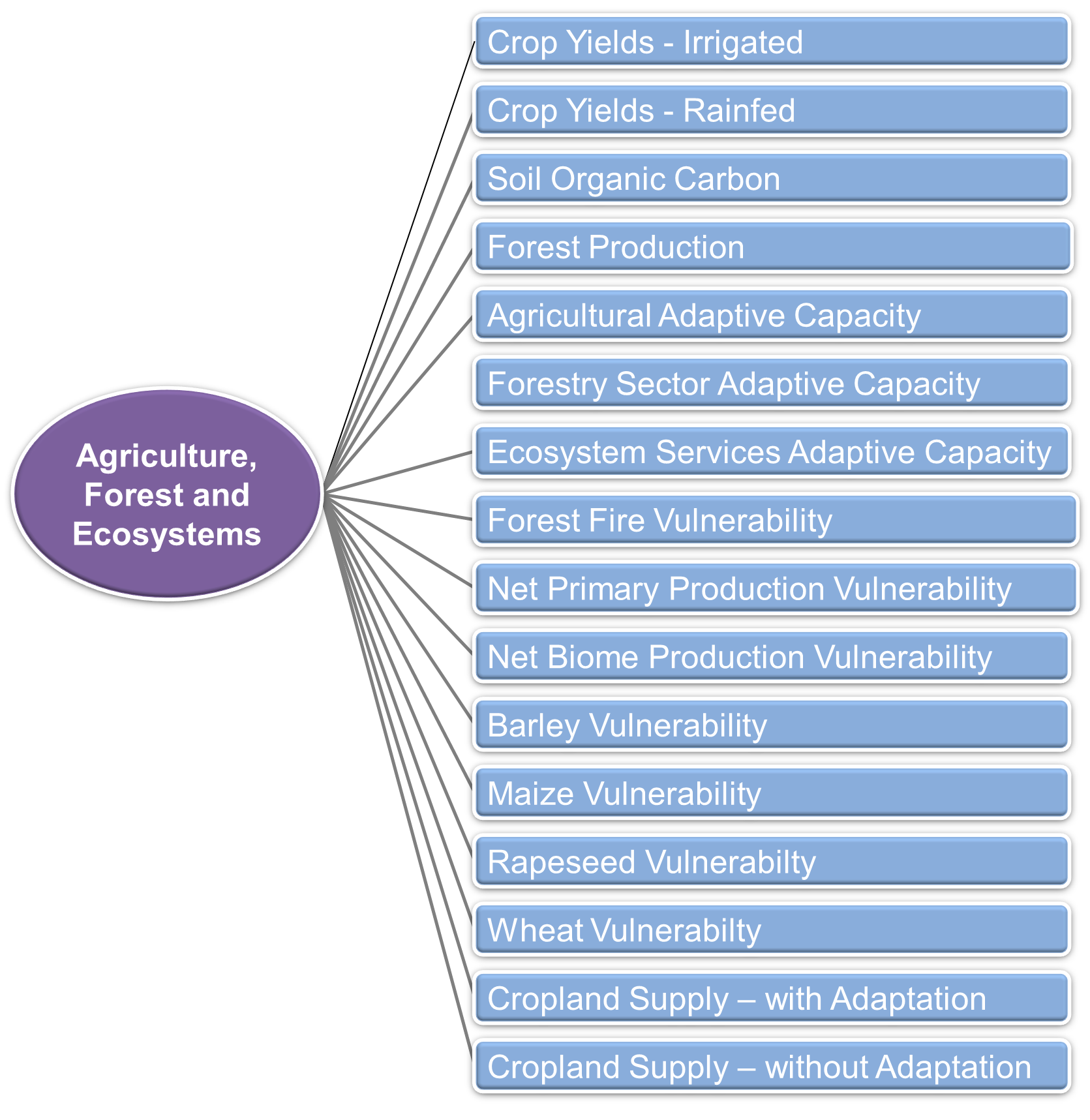The Agriculture, Forest and Ecosystems Story
1. Why is it important to consider climate change impact for agriculture, forest and ecosystems?
Agriculture was developed around 11,500 years ago and has ever since played an important role in nourishing humanity.
Climate change affects the conditions for the growth of plants and thereby nearly all sectors of agriculture. The IMPACT2C community investigated the direct influences of changing climate (e.g., temperatures and precipitation) on irrigated and rainfed crop yields, forest production as well as soil organic carbon.
Another factor for the growth of plants is their resilience which might change under different climate conditions in the future. The adaptive capacity of different plants is an indicator of how they are affected by extreme events. IMPACT2C investigated the adaptive capacity for agriculture, forestry and ecosystems. A different approach was used in assessing the modification in vulnerability due to climate change and the ability to adapt to changing hazards. The IMPACT2C community analysed the vulnerability of forests due to fires, the vulnerability of net primary production and net biome production. They also assessed the vulnerability of different crops, such as barley, maize, rapeseed and wheat. Finally, the overall European agricultural production was assessed.


2. What are the key findings?
Under +2°C climate conditions and assuming present-day crop management, there would be an overall loss of crop calorie yield. The loss is calculated as 3.5% for irrigated crops and 1.6% for rainfed crops. Regionally the effect might differ. Irrigated summer crops will be positively affected in continental and temperate oceanic regions of Europe, whereas an overall strong negative impact is expected in southern and western Europe. For rainfed crops, a robust negative impact is expected in western and southern Europe.
Affecting soil fertility, a reduction in cropland soil organic carbon for most of Europe, particularly in northern and south-eastern regions, was calculated. The calculations showed a decline of 12% on average compared to the historical baseline.
The IMPACT2C community analysed various aspects of adaptive capacity of agriculture, forestry and ecosystems. The overall finding was that eastern and southern European regions are less able to cope with and adapt to future changes under +2°C.
The vulnerability assessment for different crop types took the changing biophysical impacts into account as well as the capacity of the agricultural sector to adapt to changing climate conditions. Changes described below are due to changing drought impacts:
Future rapeseed yield faces mostly low vulnerability overall. Future barley and wheat yields face low to moderate vulnerability and future maize yield faces mostly moderate vulnerability. For rapeseed, some small regions in Germany may face moderate vulnerability to a reduction in yield. For wheat yield, some regions of central Europe may face high vulnerability to a reduction in yields. And for maize, some regions of eastern Europe may face high vulnerability to a reduction in yields.
Overall, agricultural production is expected to increase on average by 30% in Europe compared to the year 2000. This is because production remains primarily driven by the growing demand for food and by crop yield increases from research and development. They are only slightly moderated by an overall negative climate change impact on crop yields.
At national scale, nevertheless, climate change and adaptation are very strong determinants of future production levels, and induce large production reallocations.
References:

